



Suggested citation: Nitin Bassi, Saiba Gupta, and Kartikey Chaturvedi. 2023. Reuse of Treated Wastewater in India: Market Potential and Recommendations for Strengthening Governance. New Delhi: Council on Energy, Environment and Water.
Given the exponential amount of wastewater generated in the country, India has immense potential to meet the growing water demand across different sectors and improve its water environment with proper wastewater management. This study presents the case for mainstreaming the reuse of treated wastewater in India. It assesses the economic and market potential for the reuse of treated wastewater (domestic sewage) for irrigation at the national scale and makes recommendations to strengthen the existing governance on reuse.
Water security is an imminent issue in India. As per our analysis using the Central Water Commission (CWC) estimates on basin-wise water availability (CWC 2021), 11 out of the 15 major river basins in India will experience water stress by 2025, with annual per capita renewable water availability below 1,700 cubic metres. Hence, it is essential to explore alternative sources of water to address the demand–supply gap.
India treats only 28 per cent of the total sewage it generates per day from the urban centres (CPCB 2021). Out of the 72,368 million litres per day (MLD) of sewage produced in urban centres, the actual treatment is of only 20,236 MLD (CPCB 2021). Class I cities (those whose population is above 1,00,000) and class II cities (with populations of 50,000–99,999), which represent a major share (72 per cent) of the total urban population, produce an estimated 38,254 MLD of sewage, of which only 30 per cent is actually treated (CPCB 2021). The untreated wastewater is then discharged into freshwater bodies, such as rivers.
Given the exponential amount of wastewater generated in the country, India has immense potential to meet the growing water demand across different sectors and improve the water environment with proper management. Through this study, we intend to estimate the market potential for the reuse of treated wastewater (domestic sewage) at the national scale and make recommendations to strengthen the existing governance on reuse.
We undertook the following:
Figure ES1: 1.38 Mha area could have been irrigated using the TWW available in 2021

Source: Authors’ analysis using data from the Report of National Commission for Integrated Water Resources Development Plan (1999), Ministry of Water Resources (MoWR), Government of India
Figure ES2: Irrigation using TWW in 2021 could have generated INR 966 billion in revenue

Source: Authors’ analysis using data from Horticulture Statistics at a Glance 2018 (Dept. of Agriculture Cooperation and Farmers, GoI); National Horticulture Board 2022
Figure ES3: INR 50 million could have been saved through the reduction in fertiliser use by using TWW for irrigation in 2021

Source: Authors’ analysis using data from Circular Economy in Municipal Solid and Liquid Waste (2021), Ministry of Housing and Urban Affairs (MoHUA), Government of India (GOI)
We undertook this analysis to understand the comprehensiveness of the TWW reuse policies of Indian states and to determine whether they will be able to realise the market potential of the TWW in the future. We found that only 10 states in India have a TWW reuse policy and the following key gaps need to be addressed:
We must note that though the national framework on the safe reuse of treated water that was launched in January 2023 provides guidelines on some of the identified gaps, the state policies were launched much before and need revision to address these gaps comprehensively.
Based on our analysis of three selected countries (Spain, Israel, and Singapore) that are at an advanced stage in their reuse of treated wastewater, we identified key drivers, barriers, and enablers, which we present in Figure ES4.
Figure ES4: Globally, strong governance was the key enabler for the effective implementation of the TWW reuse policy
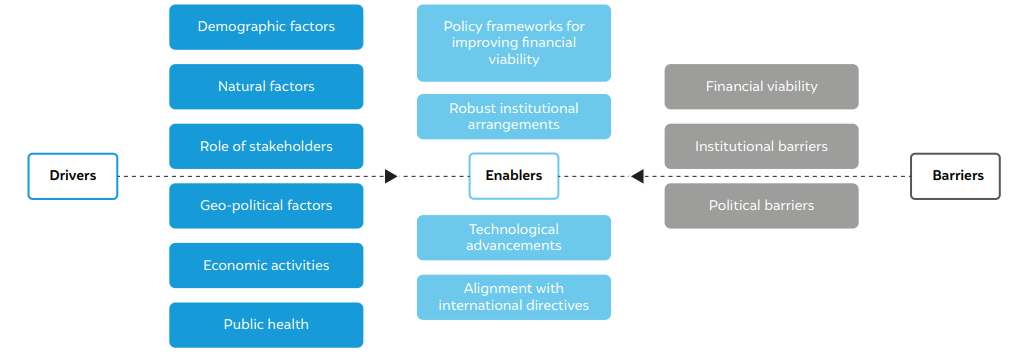
Source: Authors’ analysis
On the basis of the review of existing state policies and learnings from global best practices, we make the following recommendations to strengthen the existing governance on the reuse of treated wastewater in India:
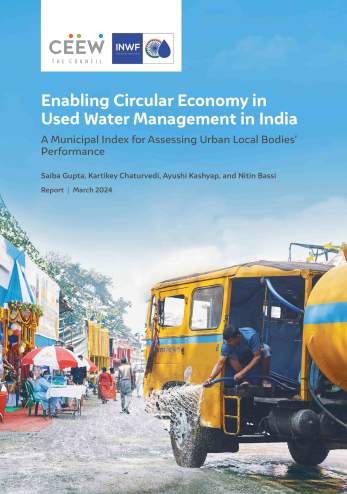
Enabling Circular Economy in Used Water Management in India
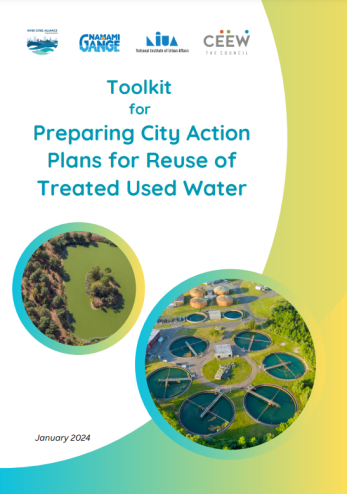
Toolkit for "Preparing City Action Plans for Reuse of Treated Used Water"
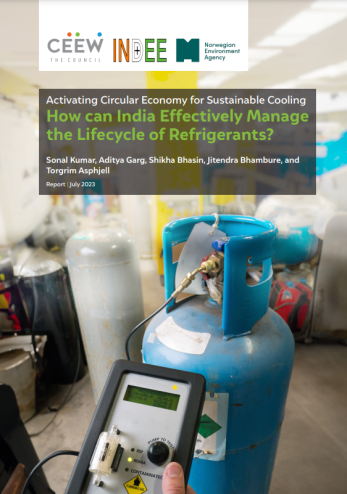
Activating Circular Economy for Sustainable Cooling
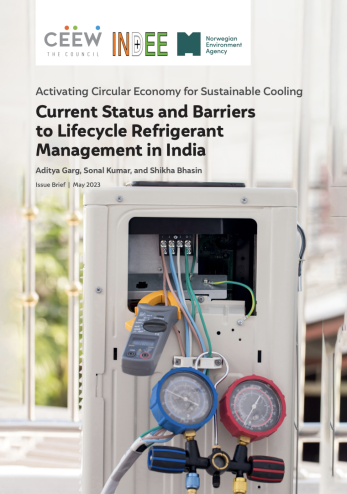
Activating Circular Economy for Sustainable Cooling
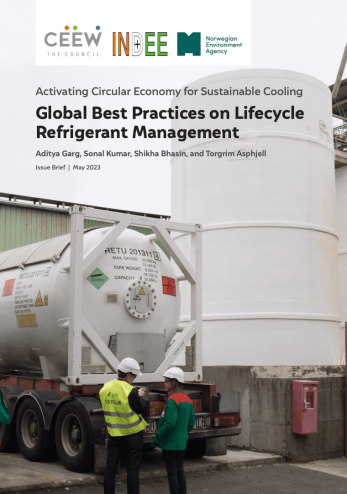
Activating Circular Economy for Sustainable Cooling